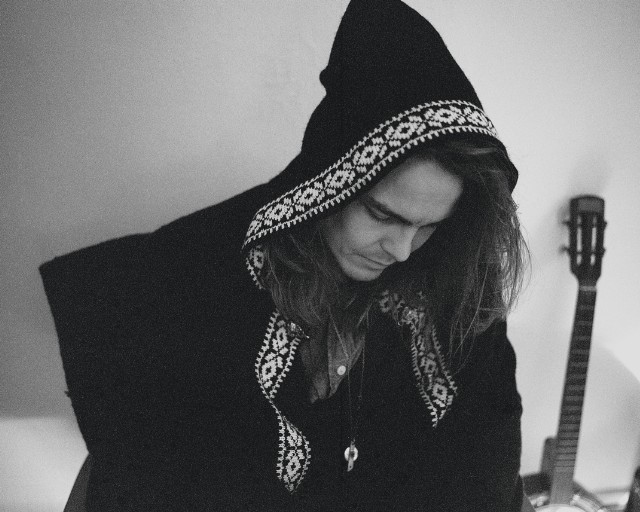Artist To Watch: Mikko Joensuu

Ask almost any musician and you’ll get the same answer: Making albums is hard work. From the creative side, wrangling the abstract forms and ideas of music into a tangible presence, to all the technical aftermath, like the long list of minute tweaks that make a record sound good and correct, a lot of exertion goes into a solid finished product. That’s before you get to outside pressures, like the idea of releasing a debut, or a first solo album, or your first release after some time away. So when Finnish musician Mikko Joensuu eventually decided he was making his solo debut via not one, but three connected albums, you might be able to forgive any friends and family who were dubious or thought he was, well, a bit crazy.
“I never actually thought they’d be records at all. I didn’t plan on releasing them in any form,” Joensuu says of the resulting Amen trilogy, which saw staggered release in Europe from June 2016 through June of this year and which is just now officially available in America. Calling from his home in Helsinki, Joensuu details the long journey and personal upheaval that yielded all his new solo work.
In his 20s, Joensuu’s life was dominated by dual struggles. After forming a band, Joensuu 1685, with his brother and releasing an album in 2008 to some buzz in Europe, Joensuu found himself in a prolonged period of depression and anxiety. He stopped playing in that band by 2011, and while seeking what was next he also reckoned with his religious upbringing and a loss of faith. Each of the Amen records represents a chapter in that story, using different aesthetics and songwriting approaches to capture the arc of Joensuu’s life.
Before moving to Helsinki at 19, Joensuu grew up further north in Finland, surrounded by forests and farms. “There’s not much there, but it’s still under the rules of civilization,” he recalls, laughing. His family were devout Pentecostal Christians, and as a younger man, Joensuu was a fervent believer, too. “I truly embraced Jesus and God. As a child, I thought the concept was as real as any people are,” Joensuu says. “There was no question about that for me.” But moving to Helsinki started a period of time where questions did start to appear, where the distance Joensuu had started to feel from Christianity turned into him grappling with what he really believed.
“I felt like I had to be honest with myself, that this was not a small question where I can say, ‘Maybe, maybe not,’” Joensuu says. “That started something that lasted for many years.”
The writing of the Amen records reaches all the way back to 2008, when Joensuu 1685 was still active. Then, the songs were simply other outlets for Joensuu, during the time he had no plans to release any of it. In early 2013, he realized he was writing for three separate albums that each “had a different kind of color in them” with the connective theme of “evolving emotion.” Coincidentally, it was around that same time that Joensuu finally walked away from the faith of his youth.
Writing the Amen trilogy was perhaps what allowed him to reach that answer for himself, to find that peace. “I think I wrote songs about it before I could actually admit to myself that there’s nothing I believe in [Christianity],” Joensuu says. “I had already started to write about the chaos of the religion… but when you grow up around these ideas and it becomes a part of you… it’s hard to say that some part of it doesn’t exist.” The final, hardest part for Joensuu was letting go of his perception of Jesus — a strain of Evangelical Protestantism, Pentecostalism accentuates the image of Jesus as the loving “brother and father,” as Joensuu puts it. In that light, Christ becomes a source of the religion’s warmth you can directly interact with. Eventually, Joensuu had to decide he no longer believed in that, either.
On Amen 1, Joensuu sounds grief-stricken, at a pained crossroads. The album is simultaneously stark and lush in its mourning, with Joensuu mostly writing wintry, ghostly Americana and augmenting the compositions with strings and…

Comments